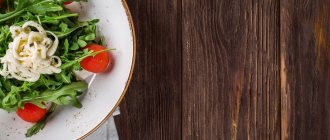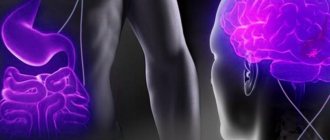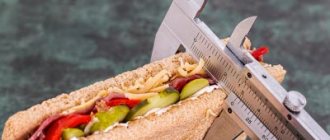Eating less doesn't mean starving
Eating less does not mean not eating at all. Going hungry is almost always a guarantee of eating a lot more in the near future. After several days, a breakdown occurs, which is scientifically called “post-starvation hyperphagia.” Hunger is the main reason why people lack willpower and why they quit dieting.
The body does not like change. It strives to maintain homeostasis or constancy of the internal environment. When you go on a starvation diet, your body turns on your hunger at full capacity and makes you sleepy and weak in order to save energy and replenish losses. You cannot control this process because it is controlled by hormones.
About fifteen hormones are responsible for hunger, the main ones being leptin, ghrelin and neuropeptide Y. They are secreted in different parts of the body, but all affect the brain.
Leptin is produced by fat cells. It tells your brain how much fat (stored energy) you have in your body, as well as how many calories you are taking in. When you are on a fasting diet, leptin levels drop and satiety signals do not reach the brain. In response to this, the brain “turns on” the feeling of hunger in order to escape death from starvation (,). When you eat a lot of calories, enough leptin is produced and it reduces hunger. In addition to hunger, leptin also affects overall metabolism by reducing the production of thyroid hormones ().
Ghrelin is a hunger hormone. It is produced in the stomach when it is empty (). Leptin and ghrelin are in an inverse relationship with each other. When leptin drops on a diet, ghrelin rises. When there is more leptin, there is less ghrelin (). Therefore, a fasting diet is a double blow in terms of hunger.
Neuropeptide Y. One of the tasks of this hormone is to delay the feeling of fullness during meals ().
If you've ever experienced the effects of starvation diets followed by weight loss and weight gain, an imbalance of these hormones most likely played a role (). When we get hungrier, we eat more. When we eat more, we gain the weight back.
Enjoy every bite
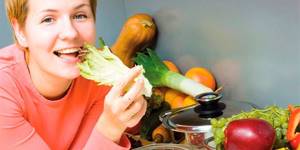
When a person eats while running, food slips unnoticed, the brain is distracted, so it does not have time to track how much has already entered the stomach. The feeling of satiety comes much later than the process is completed. The result is overeating, and with regular practice – stretching of the stomach walls. It is no longer possible to get enough of small portions; a person needs more.
Nutritionists advise eating at a slow pace. Take small pieces and chew each of them thoroughly. This kind of mindful eating reduces the number of calories you can get in one meal. Another nuance is that large gaps between each piece help to better control the sensations. It will become easier to understand when satiety has already arrived.
To make it easier to cope with the desire to eat everything in a few minutes, prepare your food properly. Divide each product into small pieces, prick them on a fork (or scoop them into a spoon) individually. Forget about lunches or dinners in front of the TV - it distracts the brain.
- How to avoid getting an infection on public transport
- Batter for pie - how to make it at home using kefir, sour cream, milk or mayonnaise
- Officials lifted the ban on the installation of used spare parts
Junk food makes you eat more

The quality of food directly affects the number of calories you receive. By “bad” food we mean burgers, desserts, chips, soda, sausages, pizza and the like with a lot of fat, sugar or salt. Unfortunately, the more “bad” food in your diet, the more and more often you want to eat it.
The human brain contains key goals - survival and reproduction. To reward us when we do things that help us survive, the brain has a reward system built into it. In nature, pleasant = useful, and the brain motivates with pleasure. When an action meets these global goals, the brain releases the hormone dopamine, which is responsible for positive reinforcement and motivation to seek repetition of what brought pleasure.
High-calorie food also gives you pleasure and makes you want to eat more of it. When receptors in the mouth and small intestine detect glucose, fructose, fatty acids, and protein amino acids, they send a signal to the brain and dopamine is released in response. And the more glucose and fats in food, the greater the surge of dopamine occurs and the more pleasure we experience from food (, 11,).
This mechanism forced our ancestors to strive for high-calorie (energy-rich) food, which was a good survival mechanism in difficult times. And for this, the brain rewarded with pleasure and motivation to look for it again. Today we still have the survival mechanisms of our ancestors, but we no longer need to look for high-calorie food, it is always nearby and in abundance.
Dish recipes
You can prepare any dishes from permitted products, but you must remember that a minimum amount of oil must be used in this process.
Meatballs with vegetables
You will need the following set of products:
- chicken breast – 500 g;
- unpolished rice – 100 g;
- carrots – 2 medium pieces;
- onion – 1 piece;
- bell pepper – 1 piece;
- cauliflower – 1 medium head.
Grind the meat in a meat grinder, add finely chopped onions and already boiled rice, salt and pepper to taste. Form meatballs and place in a deep baking tray greased with vegetable oil. Place carrots cut into large pieces, bell peppers, disassembled into inflorescences and pre-boiled cauliflower around. Place the baking sheet in the oven for 30 minutes, temperature 200 C.

These meatballs can be eaten for dinner or lunch. You can change the list of vegetables at your discretion, but do not use potatoes.
Omelette with tomatoes and spinach
Cut the tomato into large slices and fry in a frying pan on both sides with minimal addition of vegetable oil. Whisk 2 chicken eggs with 100 ml of low-fat kefir, add salt and pepper. Pour the egg mixture over the tomatoes, sprinkle chopped spinach on top and cover with a lid. Cook for 5-7 minutes on medium heat.
This omelet can be prepared with other vegetables - for example, bell pepper or grated carrots. Instead of spinach, you can use dill, parsley or green onions, garlic arrows.
Fruit salad
You need to boil 100 g of chicken breast in salted water and cut the meat into pieces. Separately chop the pineapple and grapefruit into the same fragments; all ingredients are combined in a dish. You can add a little lemon juice, vegetable oil or natural yogurt.
This salad can be prepared with boiled fish - the taste will be exotic, but quite interesting. This dish can be eaten for dinner or lunch.

Liver with apples
Beef liver is cut into strips, salted and fried in vegetable oil for 5-7 minutes at high heat. Then the liver is removed, and apples (cut into thin slices) are fried in the same oil. Fry the onion in half rings in a frying pan after the apples. Then the pre-fried ingredients are laid out on the onion, a pinch of nutmeg and 30 ml of dry white wine are added.
The dish is stewed under the lid for 7-10 minutes, after which it can be eaten for lunch or early dinner.
You can use chicken liver, but it is fried for only 3-5 minutes.
Cream soup with champignons
Required components:
- chicken fillet – 300 g;
- champignons – 250 g;
- celery – 350 g;
- carrots and onions - 100 g each.
Boil chicken fillet in 1.5 liters of water, add celery cut into large pieces. Cut the champignons into bars and fry in a frying pan until the liquid evaporates, then add chopped onions and carrots to them and fry for another 5-10 minutes with minimal addition of vegetable oil. Place the contents of the pan in a saucepan, bring to a boil and turn off.
Blend the soup with a blender until pureed and serve with sour cream and herbs (optional).
Watch this video on how to make creamy soup with champignons:
No - sweet drinks
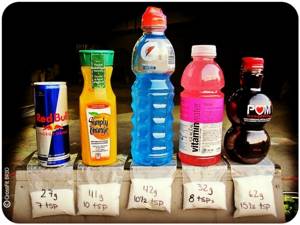
“Liquid” calories are the most invisible. Soda, juices, cocktails based on fruit or coffee, and even seemingly harmless country compote - all this brings a lot of calories due to sugar, but does not make you full.
Appetite is controlled by the brain, and some studies show that it does not “register” calories from liquid sugar in the same way as “solid” ones () and does not include a feeling of fullness as after a regular meal (). So sugary drinks don't fill you up, but they increase your thirst, making you drink more and more. This quietly increases your calorie intake throughout the day, often leading to weight gain.
Exit rules
If following the “Saucer” diet was necessary for weight loss, and the goal has already been achieved, then you can return to your usual diet. But this needs to be done gradually, increasing the calorie content of food consumed every day. This will help maintain the results obtained, not slow down your metabolism and not gain not only lost, but also new kilograms.
Doctors recommend not giving up such fractional nutrition, but simply supplementing it with harmful foods - the stomach will significantly decrease in size in 2 weeks, so subsequent overeating can lead to pathologies of the gastrointestinal tract.
Amount of food and amount of calories are not always the same thing
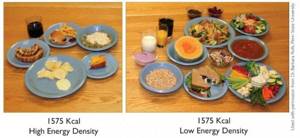
Many people take the phrase “you need to eat less” literally, although it’s not so much about the volume or weight of food, but about how many calories it brings. A big plate of salad is “a lot of food.” Eclair means “little food.” It turns out that you can eat little food in volume, but a lot in calories and vice versa.
There is a concept called energy density. It shows the ratio of calories to the weight of the product. Water is a champion in this regard: it has zero calories at any weight. Fiber also comes close: 2 calories per gram. Fat is the champion on the opposite side, with a whopping 9 calories per gram. A glass of olive oil equals weight maintenance calories for the average woman. To gain the same 1800 calories from vegetables, you need to eat several kilograms. Therefore, very often, after going on a diet, people note that they begin to eat more, but lose weight.
So, thanks to the large amount of water, fiber and the absence of fat, vegetables bring few calories to the body, but are well saturated. Insoluble fiber increases the volume of the food bolus in the stomach, and stomach fullness is one of the important signals of satiety. This helps control body weight and diet: we get fewer calories, but remain full for a long time, do not experience acute hunger and do not lapse into high-calorie foods (,).

“Saucer” diet, description, results, reviews
Good day! In this article I will tell you what the saucer diet is, which I personally tested. Its main advantage is that you can eat absolutely everything, and the results of the “saucer” diet will not keep you waiting. We are accustomed to the fact that for successful and effective weight loss we need food restrictions, we have to not allow ourselves sweets, fried foods, starchy foods and all the things we love so much. However, all these restrictions do not apply to this diet. Yes, yes, believe me, it happens!
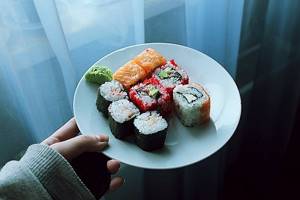
The “saucer” diet, what is its essence?
If we can eat whatever we want, then how can we lose weight? The secret lies in the portion sizes. The fact is that each of your meals should be no larger in volume than an ordinary tea saucer. We are accustomed to eating as much as our body does not actually require. It is by reducing portions in this diet that weight loss occurs. By following this diet, you can stop overeating and lose weight quickly, while still eating your favorite foods.
How many times a day should you eat? Meals on this diet are four meals a day, that is, you can eat 4 “saucers” per day. Each meal should not go beyond the boundaries of the saucer. Naturally, we don’t knock down mountains either, we don’t build pyramids in saucers.
What can you eat? Whatever your heart desires! Do you want something sweet? You will have something sweet! So what, can I even have a cake? Yes, and you can have cake! And dumplings, and pies, and bread and butter. How then can you lose weight if there are all these harmful things? Elementary! The key is in small portions. In the first days you may experience some discomfort if you are used to eating a lot at one time, but very soon you will get used to it and begin to fill yourself with a saucer. To suppress hunger, drink water, coffee and tea with the natural sweetener stevia. This is a good helper for losing weight.

When can I expect results? It all depends on the amount of extra pounds you have. In a week on such a diet you can lose from three to six kilograms.
Can you afford an extra saucer?
Yes. If four meals is not enough for you, then you are allowed to do five. Then it is advisable to eat healthier foods so that the result is no worse. Eating small meals frequently improves metabolism. You can find a list of foods that speed up metabolism in the article Foods that help speed up metabolism and burn fat.
The result of this diet is greatly influenced by the fact that in the subconscious you know that you can afford absolutely everything, which means that the chances of slipping up become much less. If you love pasta, burgers, ice cream, halva, sandwiches - eat it, don’t be afraid. Remember - there are no restrictions , you eat whatever you want.
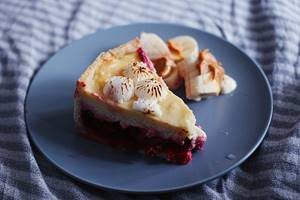
The “saucer” diet’s results , to be honest, are impressive. In 3 weeks I managed to get rid of 9 kilograms without gaining them back.
What is the best way out of the diet?
Under no circumstances should you start eating in pots as soon as you have lost those hated kilograms! My recommendation is proper nutrition. You can switch to five meals a day, gradually increasing portions slightly. Then you can stay in great shape and not harm your health.
Be beautiful and slim!
Here you can buy the best stevia for weight loss
The labels “healthy lifestyle”, “for weight loss”, “weight control” - do not mean anything
Even if a food is marketed as healthy, it may still contain a lot of calories. Healthy lifestyle and everything that claims to be like it may have a better composition (although not always), but the calories don’t disappear anywhere. Here's a comparison of a roll from one of the health food chains and a cheeseburger from McDonald's:

Healthy lifestyle products can lead to unconscious overeating. “Low fat” labels do not mean that the product is low in calories, although that is what we perceive it to be.
Participants in one study were given muesli that was labeled "low-fat." They ended up eating 49% more than those who ate plain, unlabeled muesli, knowing it was a calorie-dense food they'd better not indulge in (). There is also a study that showed that in a supposedly healthy fast food chain, people eat 34% more calories than they thought. While at McDonald's it is +25% (). They considered the exact same food in “healthy” fast food to be lower in calories. Moreover, “healthy” fast food customers tended to reward themselves for their healthy lifestyle by ordering extra chips or cookies.
This tendency to unconsciously overeat foods perceived to be healthier is known as the “health halo effect,” which is well known to marketers who increase sales simply by labeling them gluten-free, low-fat, or organic. etc. So choose products based on their ingredients rather than the health promise on the label.
Why people are scared of small portions and what to do about it
Those who are overweight are accustomed to eating more than their physiological needs. And they, it seems to them, are not at all full of a small plate of soup or just one cutlet with a couple of spoons of side dish.
This is partly true: a bulky body requires slightly more energy than a slender one. In addition, a small portion simply does not have a sufficient mechanical effect on the stretched walls of the stomach: it “seems” to be empty, so the brain does not receive signals from the digestive system that satiety has arrived.
But it turns out to be a vicious circle: if you follow the lead of your extra pounds and too large stomach, then it will be impossible to remove excess fat, which was formed primarily due to too much food.
No matter what anyone says, to lose weight, you need to eat less. And it’s not always a matter of daily caloric intake: it is very important that every meal brings energy and the coveted lightness, that is, the portions are small.
What if you don’t eat at all?

Sometimes the question arises: if the best way to lose weight is to reduce the caloric content of food, then maybe you need to eat very little or, even more reliably, starve?
I never tire of reminding you that:
- firstly, it doesn’t always work: sometimes a person drives himself to exhaustion and eats two oranges a day, but his weight still stays the same;
- secondly, there are practically no cases when, after such strict measures, the extra pounds did not return;
- thirdly, in my opinion, the stability of weight loss results is ensured by comfortable weight loss: without stress, but on the contrary, with joy;
- fourthly, do not forget about the skin hanging in nasty folds and the face swollen down, which after such an extreme you will most likely get.
Therefore, usually when asked whether it is possible to lose weight if you eat as little as possible, I usually answer like this: “It is possible. But you won’t like either the result or the process.”
Top 5 ways to get used to eating little and not suffer from it
Any habits are not formed in one day and require initial effort. But then the habit makes life much easier and more comfortable. Let this thought warm you at the thought of a small portion
Try to use all the methods at once to make it easier to get used to.
- Drink a glass of water 20 minutes before meals. This will eliminate increased appetite, reduce discomfort caused by reducing portions, improve your appearance and help you acquire another habit useful for beauty and health.
- Don't taste the food. When heating or preparing a dish, control yourself: do not allow food to be pulled into your mouth, supposedly wanting to make sure that it is hot enough or quite tasty. You are deceiving yourself: you can determine the temperature even by looking at the food; if you have over-salted, then nothing can be done anyway, but you can add salt, if necessary, directly on the plate. By pre-tasting food, you risk eating even more of it than from the plate.
- Eat from small and beautiful dishes with small cutlery. Buy the most beautiful plates of small diameter. On a smaller plate, a small amount of food looks large: this way you can outsmart your brain a little. You can eat from saucers, tiny salad bowls, jug bowls, etc., and let them be made of thin, elegant porcelain, crystal, silver, etc. You will receive part of the pleasure that food usually brings you from just the sight of miniature, but beautifully presented dishes.
- Share food. Try not just eating in small portions, but each time reduce the usual volume, first by one spoon, after a week - by two, etc.
- Eat one dish at a time. This is a very useful technique: it will help not only reduce the number of calories on your plate, but also make meals smaller, which will increase metabolism and will contribute to the appearance and then maintenance of slimness. That is, in the morning you drink water, then eat porridge, cheesecakes or an egg, for the second breakfast you have coffee with milk, at early lunch you eat a salad, an hour later - soup, then for an afternoon snack you have a roast, half an hour before dinner - compote or juice , and by dinnertime you realize that cutting down on your evening meal won’t be difficult for you at all, because all you did all day was eat. Meanwhile, the stomach has already begun to decrease in volume, and fewer calories were consumed than usual.
- Clean up leftover food. As soon as you put food from the pan or salad bowl onto your plate, remove it from the table or stove into the refrigerator. This will make it more difficult to refill yourself.
- Don't watch TV. Watching TV, YouTube channels, reading books and blogs while eating is a strict taboo. Forever. The food will taste better, the amount eaten will be smaller, and you will be happier, as the information flow will be reduced.
This is interesting: Vitamin E for the Face
Getting used to eating small portions is not so difficult: our brain “is happy to be deceived.” But how effective is this technique in getting rid of extra pounds! And how your self-esteem will rise is a completely separate conversation.
Author of the article: Olga Fomina
Natural sweets do not become dietary
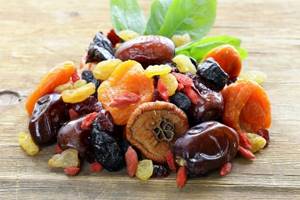
It is a well-known mistake to consider natural foods to be dietary and low-calorie. There is nothing wrong with natural sweets, but this is not permission to eat them uncontrollably.
Honey. A person gives up sugar, but adds “healthy and natural” honey to his morning porridge, but in three times more quantity. Sugar has 380 calories and honey has 320. Mixed nuts are considered a “healthy snack,” and they are. But if you look at the label, they turn out to be just as high in calories: 100 grams of nuts contain 500 calories. And this is a very compact handful, which is usually not limited to. Muesli bars and loose muesli. Thanks to marketers, high-calorie foods are now called “energy foods.” Who doesn't want energy? “Get your energy for the day” sounds a lot better than “eat half your calories first thing in the morning.” Dried fruits are healthy, but incredibly high in calories. Dates have about 300 calories per 100 grams, which is just a small handful. Fresh fruits contain a lot of water, and it is very difficult to eat a kilogram of apricots, but nothing in the form of dried apricots. Essentially, dried fruits are just candies with a little fiber and vitamins. This comes back to the issue of energy density: small volume, high calories. PP cakes, where all the usual ingredients are replaced with natural ones: instead of buttercream - peanut butter, dates, coconut oil, bananas. Instead of white flour, use any other flour: with bran, gluten-free, almond or buckwheat. It's much healthier than refined sugar and margarine, but the calories are the same.
A natural product does not mean that it is “dietary”. Although that's exactly what it seems like. Therefore, it is important to separate calories from naturalness and benefits. These are different planes.
Prohibited Products
Despite the fact that the essence of the diet is not to completely abstain from harmful foods, but only to limit their quantity, you need to know the list of prohibitions:
- fruits that contain a lot of sugar - grapes, mangoes, bananas;
- any marinades, preserves, pickles and even homemade ones;
- processed cheeses, fatty hard cheeses, soft cheeses with salt;
- any dairy products with high fat content;
- deli meats, including sausages, frankfurters and industrially produced sausages;
- fatty fish – sardine, catfish, herring, mackerel, carp;
- cereals after processing, when they become starchy - for example, polished rice;
- fatty meat - duck, pork, goose;
- any products made from butter dough;
- semi-finished products;
- fast food;
- desserts with a high sugar content, cakes, white bread, loaves;
- refined sunflower oil;
- butter, margarine, spreads;
- mayonnaise, ketchup and any industrial sauces;
- sweet carbonated drinks, instant/sublimated coffee.
For the “Saucer” diet, there is no question of completely giving up salt, but nutritionists assure that you need to strive for this and first at least reduce the amount of salt in your food.
Watch this video about the principles of the “Saucer” diet:
Dinner can be filling
Many people still have the idea that breakfast gives you energy for the day and should be the most high-calorie breakfast. They say that this is a marketing ploy by manufacturers of cereals or corn flakes from the 40s of the last century. In any case, even the most satisfying breakfast will charge you with energy for a maximum of 3-4 hours. If you move most of your food to the first half of the day, it will be difficult to fight evening hunger. And it will definitely come, because it is impossible to eat enough once and for the whole day, no matter how much you eat.
The “no food after X hours” diet may not suit everyone, because everyone has their own lifestyle, daily routine and activity level. Choosing the frequency of meals and the distribution of foods throughout the day should be realistic and convenient for you. For some, shifting most of your calories to the evening may be more effective for weight loss.
- Firstly, it's a full dinner with the family.
- Secondly, many people work during the day and forget/don’t have time to eat properly, so they tolerate hunger more easily. It’s easier for them to distract themselves from thoughts about food while they’re doing something. In the evening, when work is over and a person is left to his own devices, it is very difficult to refuse food - the refrigerator beckons and nothing distracts from thoughts of hunger. Many people go in circles: the ideal healthy lifestyle in the first half of the day and hungry breakdowns for junk food before bed.
- Thirdly, a sufficient amount of carbohydrates in the last meal helps you fall asleep faster (and there are often problems with falling asleep on a diet due to feelings of hunger).
Authorized Products
You still need to create a menu for the “Saucer” diet only from healthy foods. Even if there is some kind of festive feast coming up, you can prepare delicious and unusual dishes from the permitted products. What can you eat to lose weight:
- any fresh vegetables and herbs, but you should limit or exclude potatoes and legumes;
- any unpolished cereals, as well as wild rice;
- unsweetened fruits and sweet and sour berries;
- diet bread and baked goods made from whole grain flour;
- meat of lean varieties, if it is not possible to refuse pork, then all fat must be removed from it;
- milk and fermented milk products, but only with low fat content;
- low-fat (skinny) fish - crucian carp, pollock, hake, pike and carp;
- vegetable oils, and it is better to give preference to flaxseed, olive and/or sesame;
- any herbs fresh or dried - basil, oregano, thyme and so on;
- homemade sauces, Dijon mustard (beans);
- green and black tea, natural coffee, decoctions of rose hips/hawthorn, compotes, jelly.

Some sweets are also allowed - for example, marmalade, meringue, fruit or berry fruits, dark chocolate, marshmallows. But they should still be consumed in extremely limited quantities and in the morning.
Identify nutritional weaknesses

Every person has something they can’t resist: ice cream from a coffee shop in the city center, thin pizza from an Italian restaurant, or chocolate with nuts. They are often associated with overeating, gaining extra calories, and violating a well-structured menu.
To overcome your deficiency, write down all your nutritional weaknesses on a piece of paper. Next to each, indicate where you encounter it. Think about how to avoid these “meetings” and replace dangerous foods. Strict control will not always be needed - over time, willpower will become so strong that ignoring it will become a habit.

